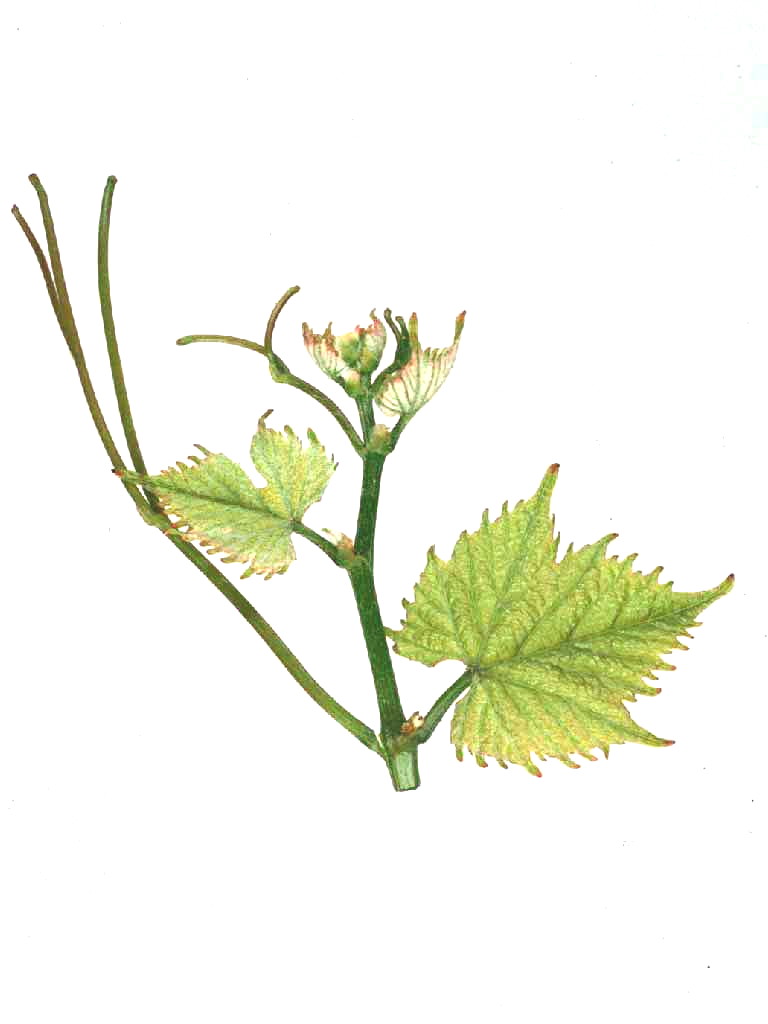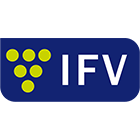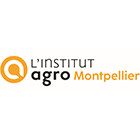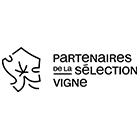Gamay
N
Wine grape variety.
The geographical origin of the variety is specified or, if this is not possible, the area in which it is traditionally cultivated. The genetic origin of the variety is also indicated whenever it is known from hybridiser data or from genetic analyses published or obtained by the teams at INRAE in Montpellier (UMR AGAP) and Vassal-Montpellier Grapevine Biological Resources Centre (CRB-Vigne).
This variety is originally from Bourgogne (Burgundy). Based on published genetic analyses, it would be the result of a crossbreeding between Pinot noir and Gouais blanc.
This information indicates the normal and statutory use for the grapes.
Wine grape variety.
Name under which the variety is officially registered in the catalogue of grapevine varieties in France and under which it may be propagated and disseminated.
Gamay
Recognised alternative names that may be used to identify the propagation material of the variety in France or in other member countries of the European Union.
There is no officially recognized synonym in France nor in the other countries of the European Union, for this variety.
This information indicates on which list the variety is registered (A or B), whether it is classified for wine grapes, and in which member countries of the European Union the variety is also officially registered (for more information, see the "Legislation" menu.
In France, Aligoté is officially listed in the "Catalogue of Vine varieties" on the A list and classified. This variety is also listed in the catalogues of other Member States of the European Union: Belgium, Bulgaria, Cyprus, Italy, Luxembourg, Netherlands, Portugal, Slovenia and Spain.
Evolution of cultivated areas in France
The figures provided are taken from vineyard land registers (IVCC, ONIVIT, ONIVINS), general agricultural censuses (SCEES-INSEE) and the current computerised vineyard register (DGDDI, FAM).
Regional vine planting data is available on the following site: https://visionet.franceagrimer.fr/Pages/DonneesInteractivesDocs.aspx?sousmenu=observatoire%20de%20la%20viticulture.
The figures provided are taken from vineyard land registers (IVCC, ONIVIT, ONIVINS), general agricultural censuses (SCEES-INSEE) and the current computerised vineyard register (DGDDI, FAM). Regional vine planting data is available on the following site: https://visionet.franceagrimer.fr/Pages/DonneesInteractivesDocs.aspx?sousmenu=observatoire%20de%20la%20viticulture.
Year |
ha |
|
|---|---|---|
|
1958 |
37806 |
|
|
1968 |
36257 |
|
|
1979 |
33869 |
|
|
1988 |
33620 |
|
|
1998 |
36653 |
|
|
2008 |
35084 |
|
|
2018 |
23650 |
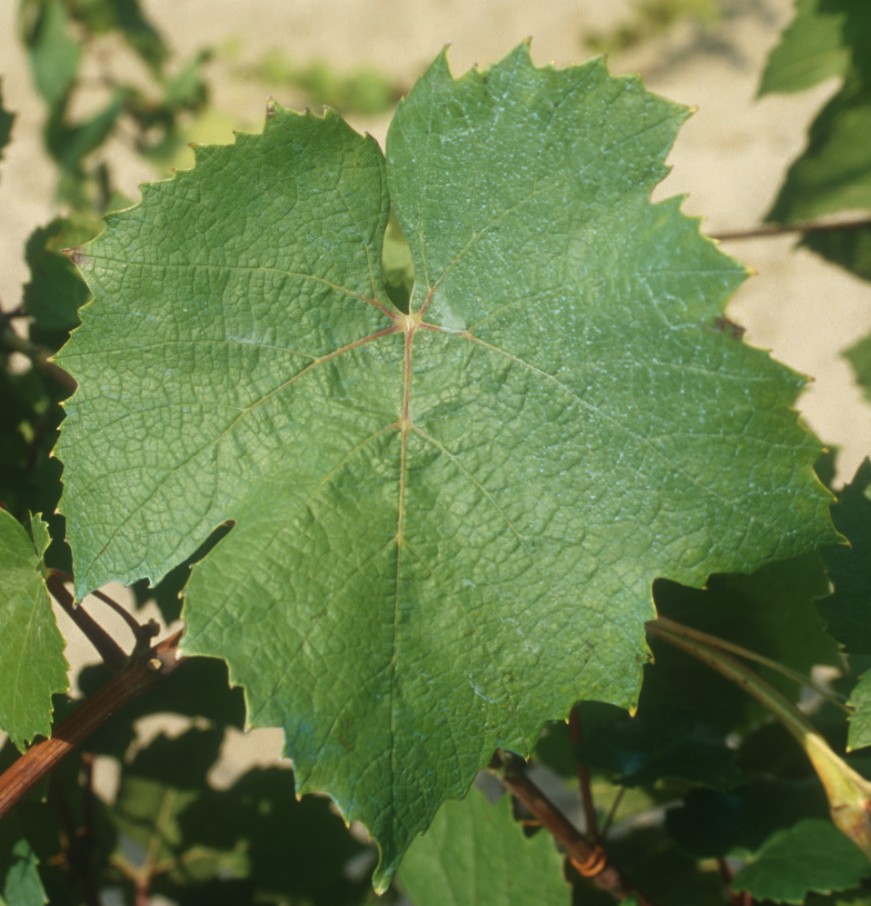
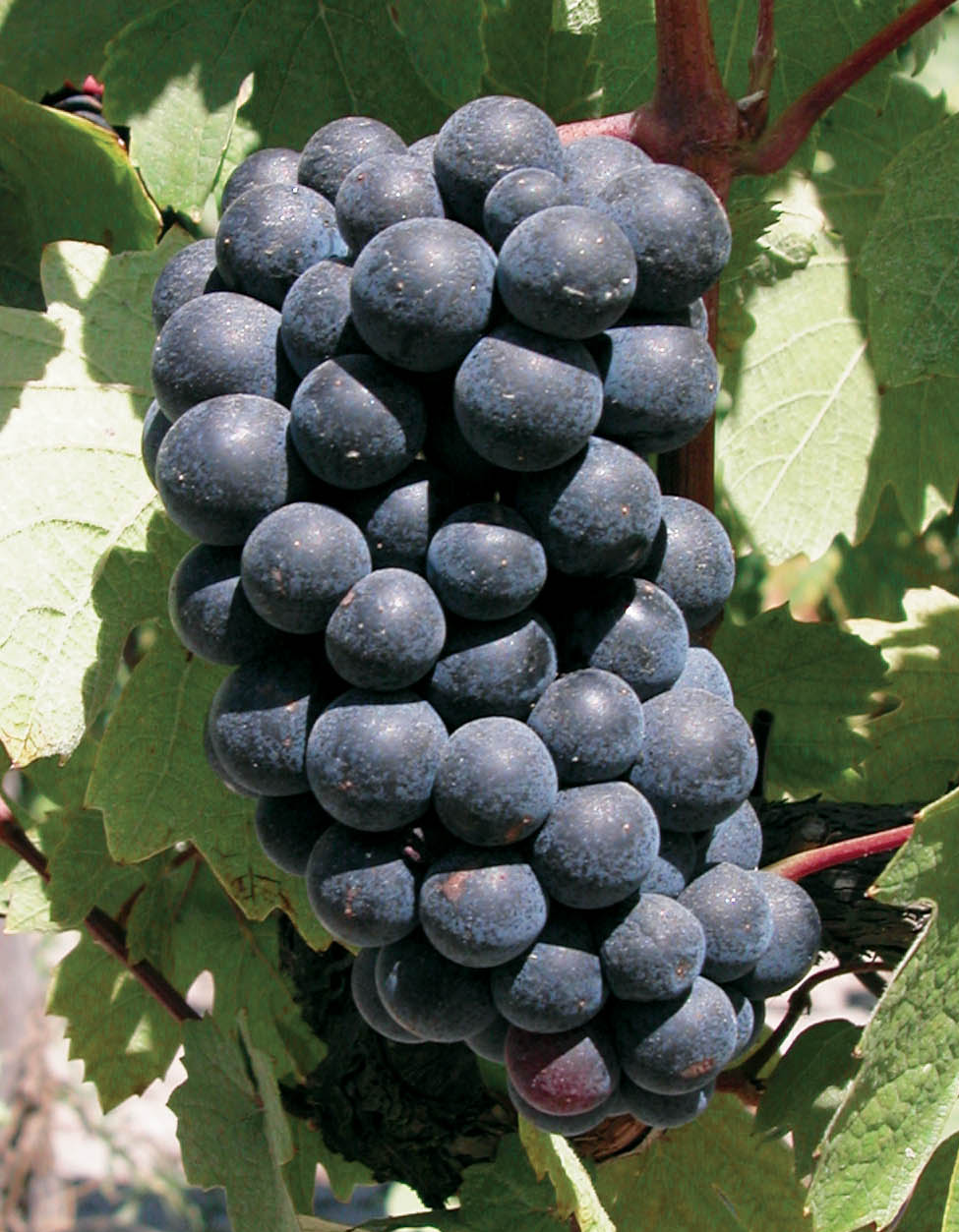
Only the principal ampelographic elements enabling the varieties to be characterised and identified are provided. They are presented according to the descriptor code recognised by the International Organisation of Vine and Wine (OIV), the International Union for the Protection of New Varieties of Plants (UPOV), the Community Plant Variety Office (OCVV) and Bioversity International (for more information, see the "Ampelographic glossary" menu). The photographs of leaves and grapes were taken in natural conditions, on the vine, in very similar situations in terms of growing conditions (sandy soil, Mediterranean coast): - Domaine de l'Espiguette (IFV), Le Grau du Roi (Gard), - Domaine de Vassal (INRAE), Marseillan (Hérault), - La Gaillarde Campus (Institut Agro | Montpellier SupAgro), Montpellier (Hérault). Only a few photographs, including the tips of bunches, were taken in other conditions.
- the tip of the young shootwith a low to medium density of prostrate hairs,
- the yellow young leaves with bronze spots,
- the shoots with red internodes,
- the circular adult leaves, entire or with five lobes, with an open V-shaped petiole sinus, short teeth compared to their width at the base with straight sides, an involute leaf blade, and on the lower side of the leaves, a very low density of erect and prostrate hairs,
- the short ellipsoid berries.
Genetic profile
The genetic profile of the variety is provided for the 9 microsatellite markers (or SSR markers) selected under the European programme GrapeGen06 (http://www.eu-vitis.de/index.php) and by the OIV. The absolute size values of the alleles may vary slightly from one laboratory to another, but the relative differences between the two alleles of one single microsatellite are constant. The genetic analyses were conducted by the INRAE Montpellier team (UMR AGAP) and the IFV’s Plant Material Centre.
| Microsatellite | VRZAG62 | VRZAG79 | VVMD25 | VVMD27 | VVMD28 | VVMD32 | VVMD5 | VVMD7 | VVS2 |
|---|---|---|---|---|---|---|---|---|---|
|
Allele 1 |
194 |
244 |
238 |
178 |
216 |
239 |
232 |
239 |
131 |
|
Allele 2 |
204 |
246 |
238 |
186 |
245 |
271 |
236 |
249 |
135 |
The data on suitability are the result of field observations or, if none are available, of bibliography mining and the study of bibliographic references.
Gamay is a low vigor variety, weak but fertile. Its production must be managed because it tends to become depleted (particularly in highly fertile soils in warm climates). It is sometimes sensitive to millerandage under adverse weather conditions at flowering time. It is an early variety, sensitive to heat. Gamay has a semi-erect to erect bearing and sould be pruned short. Following a spring frost, the shoots from the secondary buds are relatively fruitful. It tends to produce a high number of grappillons.
These remarks are also the result of field observations or, if none are available, of bibliography mining and study of bibliographic references.
Gamay is sensitive to grey rot, phomopsis, wood diseases, grape moths and grapewine yellows.
The size of grape clusters and berries indicated are based on the following scales: - Wine grape varieties Size : Very small Bunch (g) : ≤ 100 Berry (g) : 1 - Table grape varieties Bunch (g) : 150 Berry (g) : 2 - Wine grape varieties Size : Small Bunch (g) : 100 - 200 Berry (g) : 1,5 - 2 - Table grape varieties Bunch (g) : 150 - 250 Berry (g) : 2 - 3,5 - Wine grape varieties Size : Moderate Bunch (g) : 200 - 250 Berry (g) : 2 - 2,5 - Table grape varieties Bunch (g) : 250 - 400 Berry (g) : 3,5 - 5,5 - Wine grape varieties Size : Large Bunch (g) : 250 - 400 Berry (g) : 2,5 - 3,5 - Table grape varieties Bunch (g) : 400 - 700 Berry (g) : 5,5 - 8 - Wine grape varieties Size : Very large Bunch (g) : 400 Berry (g) : 3,5 - Table grape varieties Bunch (g) : 700 Berry (g) : 8 Remarks concerning the characteristics of the wines are generally based on tastings organised by juries of professionals.
The bunches are small, rather compact and the berries are medium in size. This variety produces, with the maceration of whole clusters, warm, fruity, moderately colored but not very tannic wines. This variety also produces elegant and fruity rosés.
In this section, the list of certified clones is given. Information on clone conservatories is also provided.
The are thirty-eight certified Gamay clones carry the numbers 102, 105, 106, 166, 167, 222, 282, 283, 284, 285, 355, 356, 357, 358, 359, 426, 427, 428, 488, 489, 490, 509, 510, 511, 512, 564, 565, 615, 616, 656, 657, 787, 1060, 1108, 1109, 1169, 1170 and 1227. A conservatory of 415 clones was planted in 2006 in the French department of Rhône. To this was added 510 supplementary clones in 2010.
The growth stages indicated are the result of obsrvations made at the Domaine de Vassal Estate where the set of these varieties form a collection. The results are indicated compared to the Chasselas vine variety as a reference in order to make comparisons between years and different sites. As such, for information purposes, the dates for the Chasselas B growth stage at Domaine de Vassal are as follows: - Bud burst, 21 March (average over 50 years) - Grape maturity, 14 August (average over 50 years)
Bud burst: same as Chasselas.
Grape maturity: early-season, 1 week and a half after Chasselas.
Bibliography
- Catalogue des variétés et clones de vigne cultivés en France. Collectif, 2007, Ed. IFV, Le Grau-du-Roi, France.
- Documentary collections of the Centre de Ressources Biologiques de la Vigne de Vassal-Montpellier, INRAE - Institut Agro Montpellier, Marseillan, France.
- Dictionnaire encyclopédique des cépages et de leurs synonymes. P. Galet, 2015, Ed. Libre&Solidaire, France.
- Traité général de viticulture, Ampélographie. P. Viala and V. Vermorel, 1901-1909, Ed. Masson, Paris, France.
Description of clones approved in France
In this section, the list of certified clones is given. Information on clone conservatories is also provided.
In this section, the list of certified clones is given. Information on clone conservatories is also provided.
-
Clone number
-
Brand
-
Origin
Region, department or winegrowing region in which the “clone mother plant” was identified and selected.
-
Selection
Body or bodies which selected the clone. In France, clonal selection is the responsibility of the selection organisations (themselves accredited by the ministry in charge of agriculture), usually in close collaboration with a technical partner working in a winegrowing region. For clones certified after 1999, the name of the partner or partners who took part in the selection work is also included. (NB: CA = Chamber of Agriculture).
-
Year of approval
Year in which the clone was certified by the FranceAgriMer board further to a proposal by the Vine section of the CTPS (Permanent Technical Committee for Plant Selection).
-
Agronomic Reference
Region, department or winegrowing region in which the agronomic and technological data were collected.
-
Surface in multiplication
Surface area in hectares (ha) of stock nurseries used for propagation for the year under consideration (in brackets), which allows the available potential to be evaluated. Clones with a surface area of between 0.01 and 0.10 ha are shown as <0.10 ha. Clones of limited dissemination, but for which we have technical data, are shown as <0.01 ha. Other clones are given as “low-dissemination clone”, which means that the clone has been certified only recently or has not been propagated. In both cases, only the initial material is planted in the selection centres.
-
Agronomic DataFertility medium to highProduction level highCluster weight highVigor mediumBerry size low to mediumSusceptibility to Botrytis medium
-
Technological Data
-
Sugar richness low
-
Color potential low
-
Total acidity high
-
Tannic structure low to medium
-
Oenological skills wines often irregular in quality
-
Other information
-
General note productive clone
-
Agronomic DataFertility medium to highProduction level medium to highCluster weight highVigor medium to highBerry size mediumSusceptibility to Botrytis medium to high
-
Technological Data
-
Sugar richness low
-
Total acidity high
-
Oenological skills balanced but not very fruity wines
-
Other information
-
General note productive clone
-
Agronomic DataFertility highProduction level highCluster weight highVigor medium to highBerry size highSusceptibility to Botrytis high
-
Technological Data
-
Sugar richness low
-
Total acidity high
-
Oenological skills balanced wines if yields are managed
-
Other information
-
General note productive clone
-
Agronomic DataFertility mediumProduction level medium to highCluster weight highVigor mediumBerry size medium to highSusceptibility to Botrytis medium to high
-
Technological Data
-
Sugar richness low to medium
-
Total acidity medium
-
Oenological skills tannic wines that lack finesse
-
Other information
-
General note slightly drooping bearing, rather late maturity and productive clone
-
Agronomic DataFertility low to mediumProduction level mediumCluster weight highVigor mediumBerry size highSusceptibility to Botrytis medium
-
Technological Data
-
Sugar richness low
-
Total acidity high
-
Oenological skills representative wines of the variety
-
Other information
-
General note productive clone with a low quality potential
-
Agronomic DataFertility medium to highProduction level medium to highCluster weight medium to highVigor mediumBerry size mediumSusceptibility to Botrytis medium
-
Technological Data
-
Sugar richness medium
-
Color potential low to medium
-
Total acidity medium to high
-
Tannic structure medium
-
Oenological skills balanced and fruity wines, representative of the variety
-
Other information
-
General note clone often used as a base for fruity wines by limiting its production. Suitable for the production of primeur wines.
-
Agronomic DataFertility medium to highProduction level medium to highCluster weight medium to highVigor medium to highBerry size mediumSusceptibility to Botrytis medium
-
Technological Data
-
Sugar richness medium
-
Color potential low to medium
-
Total acidity medium
-
Tannic structure medium
-
Oenological skills balanced and fruity wines, representative of the variety
-
Other information
-
General note yield must be managed in order to obtain good quality products. Clone adapted to the production of primeur wines
-
Agronomic DataFertility medium to highProduction level highCluster weight highVigor mediumBerry size medium to highSusceptibility to Botrytis medium to high
-
Technological Data
-
Sugar richness low
-
Total acidity high
-
Oenological skills representative wines of the variety
-
Other information
-
General note productive clone with a low quality potential
-
Agronomic DataFertility highProduction level highCluster weight highVigor medium to highBerry size mediumSusceptibility to Botrytis medium to high
-
Technological Data
-
Sugar richness low to medium
-
Color potential low to medium
-
Total acidity medium to high
-
Tannic structure low
-
Oenological skills balanced and lower standard of the variety
-
Other information
-
General note yield must be managed, rather late clone destined for very early and not very fertile areas
-
Agronomic DataFertility medium to highProduction level medium to highCluster weight medium to highVigor medium to highBerry size medium to highSusceptibility to Botrytis medium to high
-
Technological Data
-
Sugar richness low to medium
-
Color potential low
-
Total acidity low to medium
-
Tannic structure low
-
Oenological skills very low-structured wines
-
Other information
-
General note qualitative potential too limited
-
Agronomic DataFertility highProduction level highCluster weight medium to highVigor medium to highBerry size highSusceptibility to Botrytis high
-
Technological Data
-
Sugar richness low
-
Total acidity high
-
Oenological skills representative wines of the variety
-
Other information
-
General note productive clone with a low quality potential
-
Agronomic DataFertility highProduction level highCluster weight highVigor highBerry size medium to highSusceptibility to Botrytis medium to high
-
Technological Data
-
Sugar richness low
-
Color potential low
-
Total acidity high
-
Tannic structure low
-
Oenological skills acid wines of low constitution
-
Other information
-
General note yield must be managed, rather late clone destined for very early and not very fertile areas
-
Agronomic DataFertility medium to highProduction level medium to highCluster weight medium to highVigor medium to highBerry size highSusceptibility to Botrytis medium to high
-
Technological Data
-
Sugar richness low to medium
-
Color potential low to medium
-
Total acidity medium to high
-
Tannic structure low to medium
-
Oenological skills fruity and not very structured wines
-
Other information
-
General note clone of little interest compared to the clones already multiplied
-
Agronomic DataFertility low to mediumProduction level low to mediumCluster weight mediumVigor mediumBerry size mediumSusceptibility to Botrytis medium to high
-
Technological Data
-
Sugar richness medium to high
-
Color potential medium
-
Total acidity medium
-
Tannic structure medium
-
Oenological skills balanced, aromatic and fairly full-bodied wines
-
Other information
-
General note good potential, intermediate between fruity and structured wines
-
Agronomic DataFertility mediumProduction level mediumCluster weight medium to highVigor medium to highBerry size highSusceptibility to Botrytis medium to high
-
Technological Data
-
Sugar richness medium
-
Total acidity medium
-
Oenological skills representative wines of the variety
-
Other information
-
General note productive clone with a low quality potential
-
Technological Data
-
Oenological skills representative wines of the variety
-
Agronomic DataFertility low to mediumProduction level mediumCluster weight highVigor mediumBerry size medium to highSusceptibility to Botrytis medium to high
-
Technological Data
-
Sugar richness medium
-
Total acidity medium
-
Oenological skills representative wines of the variety
-
Other information
-
General note productive clone with a low quality potential
-
Agronomic DataFertility low to mediumProduction level mediumCluster weight medium to highVigor highBerry size medium to highSusceptibility to Botrytis medium to high
-
Technological Data
-
Sugar richness low to medium
-
Color potential low
-
Total acidity low to medium
-
Tannic structure low
-
Oenological skills wines with very light structure
-
Other information
-
General note productive clone with a low quality potential
-
Agronomic DataFertility highProduction level highCluster weight highVigor highBerry size mediumSusceptibility to Botrytis medium to high
-
Technological Data
-
Sugar richness low
-
Total acidity high
-
Oenological skills light wines
-
Other information
-
General note very productive clone
-
Agronomic DataFertility highProduction level highCluster weight medium to highVigor mediumBerry size highSusceptibility to Botrytis medium to high
-
Technological Data
-
Sugar richness low to medium
-
Total acidity medium
-
Oenological skills balanced wines
-
Other information
-
General note productive clone with limited quality potential
-
Agronomic DataFertility highProduction level medium to highCluster weight mediumVigor mediumBerry size mediumSusceptibility to Botrytis medium to high
-
Technological Data
-
Sugar richness low to medium
-
Total acidity medium
-
Oenological skills light wines
-
Other information
-
General note productive clone with limited quality potential
-
Agronomic DataFertility lowProduction level lowCluster weight mediumVigor lowBerry size mediumSusceptibility to Botrytis medium to high
-
Technological Data
-
Sugar richness high
-
Color potential medium
-
Total acidity low
-
Tannic structure medium to high
-
Oenological skills balanced, aromatic and full-bodied wines
-
Other information
-
General note earlier clone, not very productive, with low acidity and appreciated in Beaujolais. Well suited to the production of wines suitable for ageing. Avoid sectors and blends with rootstocks favouring earliness.
-
Agronomic DataFertility mediumProduction level mediumCluster weight mediumVigor highBerry size medium to highSusceptibility to Botrytis medium to high
-
Technological Data
-
Sugar richness low to medium
-
Total acidity high
-
Oenological skills representative wines of the variety
-
Other information
-
General note productive and low quality clone
-
Agronomic DataFertility highProduction level highCluster weight highVigor highBerry size highSusceptibility to Botrytis high
-
Technological Data
-
Sugar richness low
-
Total acidity high
-
Oenological skills representative wines of the variety
-
Other information
-
General note late productive clone
-
Agronomic DataFertility highProduction level highCluster weight highVigor highBerry size medium to highSusceptibility to Botrytis high
-
Technological Data
-
Sugar richness low
-
Total acidity medium
-
Oenological skills representative wines of the variety
-
Other information
-
General note late productive clone
-
Agronomic DataFertility low to mediumProduction level mediumCluster weight medium to highVigor mediumBerry size mediumSusceptibility to Botrytis medium
-
Technological Data
-
Sugar richness medium
-
Total acidity medium to high
-
Oenological skills representative wines of the variety
-
Other information
-
General note productive clone with a low quality potential
-
Agronomic DataFertility mediumProduction level lowCluster weight lowVigor highBerry size mediumSusceptibility to Botrytis low to medium
-
Technological Data
-
Sugar richness high
-
Color potential high
-
Total acidity medium
-
Tannic structure high
-
Oenological skills colored, aromatic and full-bodied wines
-
Other information
-
General note earlier maturity clone with divided leaves. It is appreciated for its low yield and its ability to produce wines suitable for ageing.
-
Agronomic DataFertility mediumProduction level highCluster weight highVigor medium to highBerry size highSusceptibility to Botrytis medium to high
-
Technological Data
-
Sugar richness low
-
Total acidity high
-
Oenological skills representative wines of the variety
-
Other information
-
General note productive clone with a low quality potential
-
Agronomic DataFertility low to mediumProduction level mediumCluster weight mediumVigor highBerry size medium to highSusceptibility to Botrytis low to medium
-
Technological Data
-
Sugar richness medium
-
Color potential low to medium
-
Total acidity medium to high
-
Tannic structure medium
-
Oenological skills acidic and medium-structured wines
-
Other information
-
General note rather late clone destined for very early and not very fertile areas
-
Agronomic DataFertility mediumProduction level medium to highCluster weight highVigor mediumBerry size medium to highSusceptibility to Botrytis low to medium
-
Technological Data
-
Sugar richness medium to high
-
Color potential medium to high
-
Total acidity medium
-
Tannic structure high
-
Oenological skills colored, fine, aromatic and complex wines
-
Other information
-
General note drooping bearing, production needs to be managed in order to obtain good qualitative expression. Clone adapted to the production of primeur wines and wines suitable for ageing.
-
Agronomic DataFertility mediumProduction level medium to highCluster weight mediumVigor low to mediumBerry size medium to highSusceptibility to Botrytis medium
-
Technological Data
-
Sugar richness low to medium
-
Color potential low
-
Total acidity medium to high
-
Tannic structure low
-
Oenological skills acidic wines of low constitution
-
Other information
-
General note late and low quality clone
-
Agronomic DataFertility highProduction level mediumCluster weight mediumVigor mediumBerry size mediumSusceptibility to Botrytis medium
-
Technological Data
-
Sugar richness high
-
Color potential medium
-
Total acidity medium
-
Tannic structure high
-
Oenological skills balanced, fine and aromatic wines
-
Other information
-
General note compact bunches with a little of millerandage. Wines appreciated in tasting. Clone adapted to the production of wines suitable for ageing.
-
Agronomic DataFertility medium to highProduction level mediumCluster weight mediumVigor lowBerry size mediumSusceptibility to Botrytis medium
-
Technological Data
-
Sugar richness medium
-
Color potential medium
-
Total acidity medium to high
-
Tannic structure high
-
Oenological skills colored, fruity, fat and tannic wines
-
Other information
-
General note intermediate yield. Wines appreciated in tasting. Clone adapted to the production of wines for ageing
-
Agronomic DataFertility lowProduction level lowCluster weight low to mediumVigor mediumBerry size mediumSusceptibility to Botrytis medium
-
Technological Data
-
Sugar richness medium to high
-
Color potential medium to high
-
Total acidity medium
-
Tannic structure medium to high
-
Oenological skills balanced, structured and aromatic wines
-
Other information
-
General note erect bearing, wines appreciated in tastings
-
Agronomic DataFertility lowProduction level lowCluster weight low to mediumVigor mediumBerry size mediumSusceptibility to Botrytis medium
-
Technological Data
-
Sugar richness high
-
Color potential high
-
Total acidity medium to high
-
Tannic structure high
-
Oenological skills colored and aromatic wines with good tannic structure
-
Other information
-
General note erect bearing, clone not very productive and very appreciated wines in tasting. Clone adapted to the production of wines for laying down.
-
Agronomic DataFertility lowProduction level lowCluster weight mediumVigor lowBerry size low to mediumSusceptibility to Botrytis low
-
Technological Data
-
Sugar richness high
-
Color potential high
-
Total acidity medium
-
Tannic structure high
-
Oenological skills well-balanced, colored and structured wines
-
Other information
-
General note clone not very productive, small loose bunches with very ovoid berries, good tolerance to rot, rather early. Wines of superior gustative quality with a good balance between aromas and structure.
-
Agronomic DataFertility very lowProduction level lowCluster weight highVigor lowBerry size mediumSusceptibility to Botrytis medium to high
-
Technological Data
-
Sugar richness medium
-
Color potential medium
-
Total acidity medium to high
-
Tannic structure medium to high
-
Oenological skills balanced and structured wines
-
Other information
-
General note Gamay d’Auvergne type clone, not very fertile but with large bunches, rather late. Wines of phenolic composition superior or equal to the Gamay clone 509, as well as its gustative quality.
-
Agronomic DataFertility medium to highProduction level lowCluster weight lowVigor mediumBerry size low to mediumSusceptibility to Botrytis low
-
Technological Data
-
Sugar richness medium to high
-
Color potential high
-
Total acidity medium to high
-
Tannic structure medium to high
-
Aromatic intensity high
-
Oenological skills colored wines with good tannins that last in the mouth
-
Other information
-
General note A late, not very productive clone. Less susceptibility to grey rot due to small, loose bunches with millerandage. Wines appreciated in tasting.
